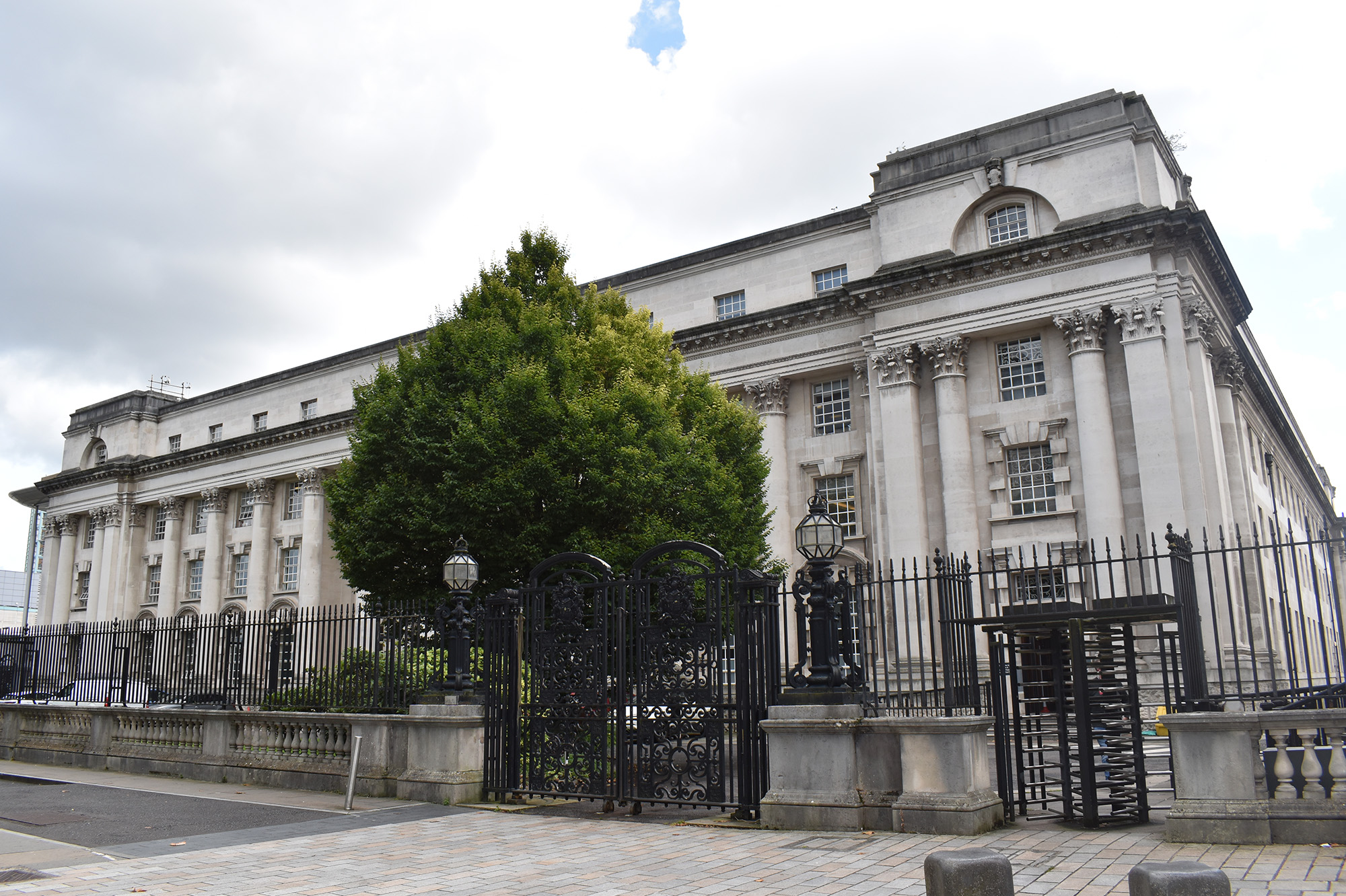Professor Colin Murray: The NI High Court’s Sean Brown decision as a feminist judgment

Professor Colin Murray examines a recent ruling by Northern Ireland’s High Court on the 1997 murder of GAA official Sean Brown through the lens of feminist jurisprudence.
The idea of a feminist judgment, or indeed a feminist judge, remains a scary thought for many lawyers. Judges are to be detached and impartial in deciding cases. For Lord Bingham, a decision must derive from the application of norms and legal principles, and not from ‘extraneous considerations’ such as ‘the prejudice or predilection of the judge, or worse, by any personal agenda of the judge, whether conservative, liberal, feminist, libertarian or whatever’. But judging does not happen in a vacuum, and it isn’t the purview of automatons. A judge’s beliefs will inevitably influence their choices within judgments, where the application of rules and principles involves the making of choices.
And so, in multiple feminist judgments projects, it is demonstrated that feminist principles can and indeed must inform judge craft, if we are to accept that judges within 21st-century liberal democracies should be interpreting and applying the law to mitigate imbalances of societal advantage on the basis of gender. This could mean that a judicial feminist might, in the words of Rosemary Hunter, ‘perceive[] no feminist issue to arise’ in a great many of the cases they decide (Hunter, Feminist Judgments, Hart, 2010, 32). But even in the scope of many of these projects, a focus on the identifying the gendered implications of particular operations of legal rules channels accounts of feminist judging towards a range of familiar issues; claims of discrimination, family law, sexual offences.
We are conditioned to think that these are the main areas in which feminist jurisprudence can make a difference because they are the areas in which law has already been shown to operate in conspicuously unfair ways towards women. The concept of a feminist judicial ethos, however, is not context specific, and it extends to efforts to ‘reframe the narrative of the case’, particularly where this makes ‘women’s lived experiences more visible in legal discourse and the construction of legal rules’ (McCandless et al, Northern / Irish Feminist Judgments, Hart, 2017).
The case of In re Brown [2024] NIKB 109, decided in the NI High Court in mid-December 2024, does not focus on an area of law in which ‘the woman question’ is at the forefront of the decision. It is about the aftermath of a murder in the course of the “Troubles”, however much that label downplays the significance of that conflict. But in both form and substance Mr Justice Humphreys’ decision engages some of the most important elements of feminist jurisprudence.
Feminist theorists focused on vulnerability, and in particular Judith Butler and Martha Fineman, require us to move beyond the elision of feminist judging and “women’s issues”. The purpose of a just society is not to promote the freedom of people to exploit the full extent of the personal advantages that they have in life, but to respond to human vulnerability and provide as broad as possible a basis for people to fully participate in society. These feminist theorists challenge comfortable assumptions about the judicial role within the operation of entire areas of law. Human rights can no longer be treated as synonymous with restrictions on public bodies from interfering in the life choices of those with the means to protect their interests. And it is within this context that we can consider Mr Justice Humphreys’ decision in response to Bridie Brown’s application for judicial review.
Sean Brown’s murder at the hands of the paramilitary Loyalist Volunteer Force in 1997 was one amongst the thousands of murders in the course of the conflict in Ireland. Each one of those events brings a legacy of pain for the families, but in this case the horror of the events was compounded by the manifest shortcomings in the subsequent police investigation and an inquest was stymied until 2023. Although Mr Justice Kinney, coroner in the much-delayed inquest, was able to establish that ‘a number of individuals linked through intelligence to the murder were agents of the state’, he concluded that he could not complete the inquest because failures by public bodies to fulfil their statutory duties to disclose information regarding the murder would inevitably lead to a misleading outcome. Thereafter, successive Conservative and Labour Government’s have refused to institute a public inquiry into these events and have sought to persuade the Brown family to use the controversial processes established under the Northern Ireland Troubles (Legacy and Reconciliation) Act 2023.
The European Convention on Human Rights does not, on its face, say anything about the adequacy of investigations into murders. Obligations upon states to provide for effective investigations developed through the European Court’s jurisprudence, however, precisely because without such an obligation it can be all to easy for a state to conceal its involvement in killings and uneven application of policing powers (see Finucane v UK (2003) 37 EHRR 29). These developments acknowledge the vulnerability of individuals to such exercises of state power, and in response require the state to conduct and adequately resource investigations. The problem is that, as the law currently stands, the Legacy Act processes do not comply with these right to life obligations, as the Court of Appeal concluded in Dillon [2024] NICA 59. The Labour Government, indeed, accept that the current scheme is not rights compliant, and have committed to making some changes to the legislation. These do not, however, go as far as the Court of Appeal required, and the Government is thus appealing the decision to the UK Supreme Court.
In refusing to grant an inquest in this case, the Northern Ireland Secretary was thus asking the Brown family to rely on Legacy Act processes that would inevitably fall short of the standards of a full public inquiry on the basis that this would be the cheaper option in this case. In challenging this position before the courts, however, the family wanted a judge to recognise that ministerial discretion in a case like this one is highly constrained and to mandate a resource intensive public inquiry to meet those obligations. These have historically been tall asks for courts in the UK, with judicial review being primarily conceived of a process of preventing unlawful or procedurally improper exercises of public power, rather than a means by which the courts tell executive actors how they must do their job (especially where this has significant cost implications). This is the issue at the heart of In re Brown.
Mr Justice Humphreys, from the outset, hones in on the supposed importance of the issue of reconciliation for official policy. It is there in the title of the Legacy legislation, but he steadily unpacks how this became a worn out concept for the Brown family, a mere ‘policy word’, as the judge attests in quoting from Seamus Heaney (para 2). In recounting the ways in which the Brown family have been failed over decades by official processes, Mr Justice Humphreys recognises that this is exactly the sort of case in which the standard constraints on the judicial role should not apply, and indeed, that to leave discretion in the hands of the Secretary of State would be to facilitate the state in the continuing avoidance of its obligations (para 81):
“After 27 years, the United Kingdom has manifestly failed to investigate the murder of Sean Brown in which state agents were allegedly involved. An 87 year old widow does not know how, why or by whom her husband was killed. Previous investigations have been fundamentally flawed. Information has been deliberately withheld. The inquest process has been repeatedly frustrated by the failures of state agencies to comply with their statutory obligations. It simply cannot be the case that the state can cite resources and ignore the duty it owes to the Brown family.”
If the state is not required to redress these shortcomings, then anyone could find themselves vulnerable to such practice where it is embarrassing or expensive for a full investigation to be conducted. And lurking within these lines is an acknowledgement that the failures of state agencies are so manifest that it must be in the interests of some executive actors to thwart the Brown family’s efforts to find out more about the murder.
Thus, ‘unusual and exceptional’ though this course was, Humphreys J was willing to mandate that a public inquiry be held (para 85):
“This is not a case where there is any plea of impossibility. I have concluded that there is a clear and unambiguous obligation on the state to carry out an article 2 compliant investigation. No viable alternative to a public inquiry has been advanced. In these circumstances, there can be only one lawful answer, a public inquiry must be convened to satisfy the state’s article 2 obligation. Bearing in mind the importance of the rule of law, the breach of duty in the circumstances of this case is such as to call for the grant of mandatory relief to compel the state to fulfil its clear legal duty.”
In other words, so important is the issue, and so extensive and long running have been official efforts to thwart an investigation, that the court is not willing to give the Government any further leeway in how it responds to its effective investigation obligations in this case, even if considerable public expense is involved.
These are the sort of sustained obstructions to justice that should make people angry, and with it to yearn for some heroic judicial figure to set doctrine aside and deliver justice. But what good will that do; a blustering and intemperate judgment which does not articulate why a case is exceptional will likely be reversed on appeal. Retreat into the safe harbour of precedent, and a first instance judge finds no basis for mandating an inquiry. Mr Justice Humphreys, however, does not play act the heroic judge. He makes certain the narrative of his judgment is about ‘the Brown family’s 27 year quest to discover what happened to a much-loved husband and father’ (para 3). This decision is about Bridie Brown and everything that officialdom has forced her and her family to endure. It is that which makes the demand for a public inquiry compelling, that which limits the leeway ordinarily enjoyed by the state.
This makes for a bold outcome; a public inquiry has never been mandated in this way by the courts before. But it also makes for a feminist judgment, one which is acutely conscious of human vulnerability in the context of conflict. The judge, moreover, never loses sight of the multiple wrongs inflicted on the Brown family, and he refuses to leave them waiting years, and having to fight on, to see the Legacy Act processes “fixed”. You cannot exhaust people into reconciliation and you cannot expect them to simply have faith in a justice system which perpetuates such abuses.
-
Professor Colin Murray is a professor of law and democracy at Newcastle University. This article first appeared in The Morrigan, the blog of the Doing Feminist Legal Work project.
-
Doing Feminist Legal Work is a network funded by the Irish Research Council under the New Foundations Shared Island scheme, connecting legal scholars across Ireland, Northern Ireland and Britain addressing emerging issues of gender and law. The Morrigan is currently welcoming submissions on different legal feminist issues.







